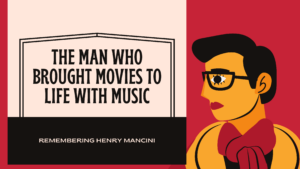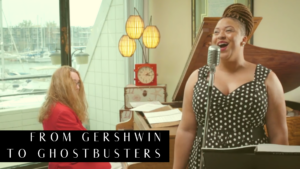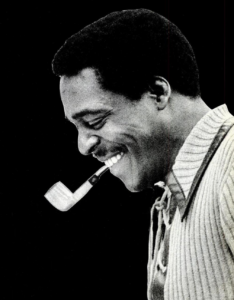We’re starting this blog on a high note, which always carries a certain risk. On the other hand, this particular intro will give our readers plenty of insight into what Viva Virtuoso is. This is not only to say that Bernstein tunes will be a regular fixture, but also that Bernstein perhaps best represents the whole feel of what we’re trying to achieve.
A Bernstein piece that particularly embodies the high-brow with the low-brow and what was then contemporary with today’s day and age is The Age of Anxiety.
In Bernstein’s Own Words
Anyone who has had the chance and the privilege of being in the same room with Bernstein will recall both his magnanimous charm and just how approachable he always seemed, in any setting. There was a mixed feeling of palpably being in the presence of greatness, trimmed with a down-to-earth familiarity. One of the most endearing things about him was his ability to express why musicians have passion for music. He was able to explain, without going into too much technical detail, a sense of his love for music.
The Age of Anxiety started out as a book-length poem by W.H. Auden and, according to folks who claim to know plenty about this literary sort of thing, was a drastic shift in the author’s style that could have ended his career. One haughty critic called it “his one dull book, his one failure.” And, in a lot of ways, it was tough to grasp and not for everyone.
For a rare few though, the book had the impact of Elvis’ first appearance on the Ed Sullivan Show and Bernstein was among them. Eventually, the symphony was commissioned by Bernstein’s long-time mentor Serge Koussevitzky and dubbed The Age of Anxiety: On Being Happy During Miserable Times.
His personal take on the story behind the piece is as interesting as the piece itself. It comes as a reminder that what influenced much of Bernstein’s work was inspired by the tough times and reconstruction era of post WWII America. But best to let Leonard himself explain where that came from and the scenes that he imagined should go with this music.
Bernstein on the Future of Music
In 1973, Leonard Bernstein was invited to do an Unanswered Question lecture at Harvard University. He closed his lecture with what, according to him, would be the future of music. He predicted, in just a few sentences, that musical eclecticism would rise and that the innate nature of humans to listed to naturally structured sounds would resurge in astronomical measures. Somehow, he was both neck-deep in his time and ahead of his time.
In this seemingly off-the-cuff speech, Bernstein makes references to tonality and the overtone series when talking about this return to nature – all the while making it perfectly understandable to the average human being. He knew only too well how the 20th century movements of atonality began to lead us away from the natural sound. This was an experiment we would soon begin to recover from, as our inherent impulses lead us back to the natural order of things in the world.
It was almost as if Bernstein was predicting the age of the internet and how it would affect our listening habits. Technology has not only changed the way music is produced, but the way music is searched for, uncovered, and listened to. In a world of autotune and samples of instruments instead of natural sounds, one wonders what Bernstein would have thought of this immediate future.
The music available to us has never been more eclectic, but we find ourselves in an almost neurotic, always connected world. Bernstein’s Age of Anxiety was meant to be a soundtrack to the original poem. Today, it could very well serve as the soundtrack to the age we live in.


